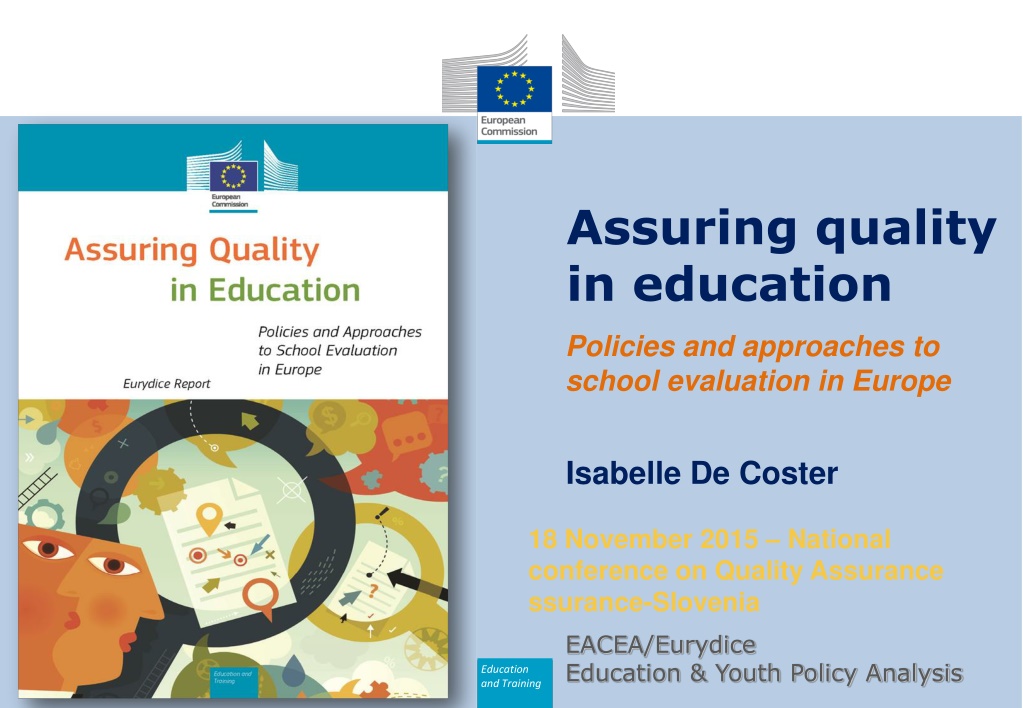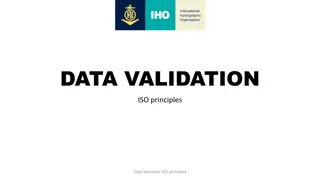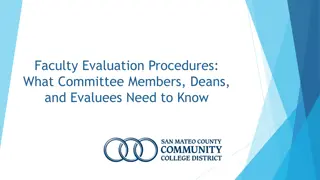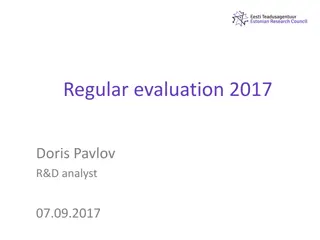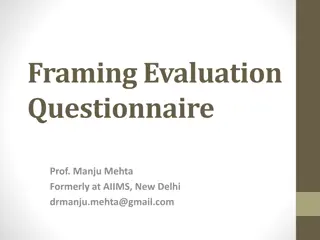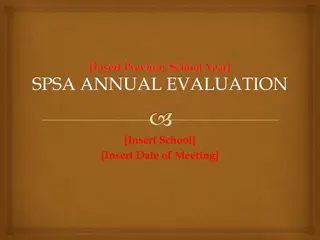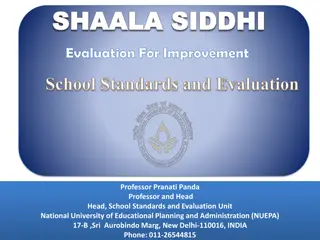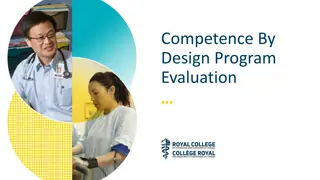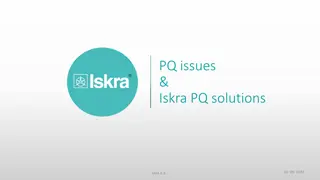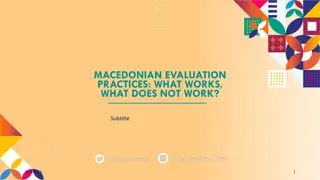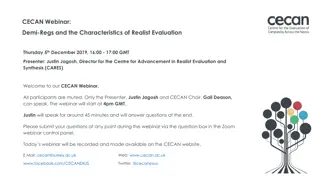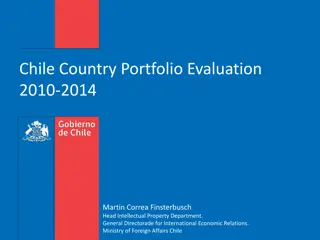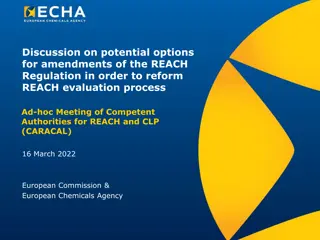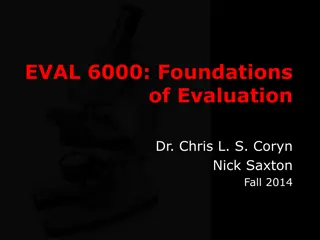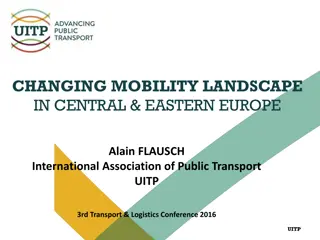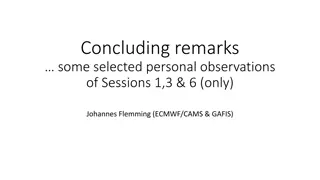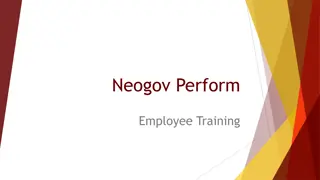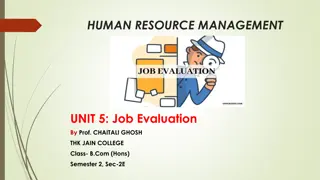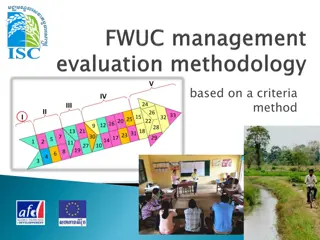Ensuring Quality in Education: School Evaluation in Europe
Explore the policies and approaches to school evaluation in Europe with a focus on external and internal evaluation methods, quality assurance approaches, and recommendations from the European Parliament and Council. Discover insights on the purpose and evolution of school evaluation, emphasizing the systematic analysis of educational quality. Delve into the significance of external evaluation in enhancing school autonomy and fostering a culture of quality improvement.
Download Presentation

Please find below an Image/Link to download the presentation.
The content on the website is provided AS IS for your information and personal use only. It may not be sold, licensed, or shared on other websites without obtaining consent from the author. Download presentation by click this link. If you encounter any issues during the download, it is possible that the publisher has removed the file from their server.
E N D
Presentation Transcript
Assuring quality in education Policies and approaches to school evaluation in Europe Isabelle De Coster 18 November 2015 National conference on Quality Assurance ssurance-Slovenia EACEA/Eurydice Education & Youth Policy Analysis Education and Training
Eurydice Network in 2015 37 COUNTRIES 41 NATIONAL UNITS Eurydice (under Ministries responsibility) Education and Training 2
Eurydice: mission statement To provide those responsible for education systems and policies in Europe with European-level analyses and information which will assist them in their decision making. Eurydice Education and Training 3
The report on school evaluation Comparative analysis of school evaluation systems External evaluation Contents Internal evaluation National Profiles (32 countries including all MS) External evaluation Internal evaluation Other quality assurance methods Eurydice Reforms Education and Training 4
Why school evaluation Recommendations of the European Parliament and Council on European cooperation in quality evaluation in school education. OJ C 116, 1.3.2001 Council conclusions ET2020: emphasis on quality in education (Strategic objective 2). OJ C 119, 28.5.2009 Council conclusions on quality assurance supporting education and training. OJ C 183, 14.6.2014 Draft 2015 Joint Report of the Council and the Commission on the implementation of ET2020. 26.8.15 Eurydice Education and Training 5
What is school evaluation Evaluation: systematic and critical analysis of a defined subject One among other quality assurance approaches in education Focuses on the school as an entity and unity Does not place responsibility on individuals but on the overall functioning of the school Eurydice Education and Training 6
External evaluation Widely used approach (26 countries) Development over the last ten years Linked to school autonomy Evolution of its nature: From individual staff to school as a whole From 'checklist' to culture of quality enhancement (legal compliance dimension AND efficiency/efficacy) Eurydice Education and Training 7
Figure 1.1: Status of the external evaluation of schools according to central/top level regulations, full-time compulsory general education, 2013/14 External evaluation of school is carried out ISCED 1 CY External evaluation of school carried out as a piloting phase No external evaluation of school is carried out Eurydice Education and Training 8
Figure 1.3: Central/top level arrangements for establishing the content and criteria of external school evaluation, full-time compulsory general education, 2013/14 ISCED 1: CY Specific framework with parameters and standard Specific framework with parameters but no standards List of topics to cover/indicators to consider No external evaluation of schools/no central regulations Eurydice Education and Training 9
School evaluation framework used in Scotland Nine key areas: 1. Key performances outcomes 2. Impact on learners 3. Impact on staff 4. Impact on the community 5. Delivery of education 6. Policy development and planning 7. Management and support of staff 8. Partnerships and resources 9. Leadership Eurydice Education and Training 10
Each key area is represented with various quality indicators EX. Key area "Delivery of education" 5.1 The curriculum 5.2 Teaching for effective learning 5.3 Meeting learning needs 5.4 Assessment for learning 5.5 Expectations and pormoting achievment 5.6 Equality and fairness 5.7 Partnerships with learners and parents 5.8 Care, welfare and development 5.9 Improvement through self-evaluation Eurydice Education and Training 11
Each quality indicators corresponds to several themes EX. Key area "Delivery of education" Quality indicator "Teaching for effective learning" The learning climate and teaching approaches Teacher-pupil interaction including learners engagement Clarity and purposefulness of dialogue Judgements made in the course of teaching Eurydice Education and Training 12
Level of achievement for 'Delivery of education' Level 5: Building on our shared values, we create a stimulating learning climate using skilful and well-paced teaching and learning approaches. Learners experiences are well matched to their needs and sustain their motivation and attention. We develop learners abilities to be curious and creative and to think critically. Tasks and activities in our classes and home- learning activities are well planned and involve learners as effective contributors, working independently and with others cooperatively in solving problems. We make full and effective use of ICT during teaching and learning. We share the purposes of lessons with learners. Learners know what they need to do to improve and to become successful. Our explanations and instructions are clear and build on previous learning and real-life experiences. We ensure that learners have opportunities to take responsibility for aspects of their own learning and their relationships with others. Learners enjoy their experiences and make progress in their skills as learners. They are engaged in learning and aware of themselves as learners. We use feedback effectively to promote learning. Eurydice Education and Training 13
Figure 1.4: Procedures for external evaluation, full-time compulsory general education, 2013/14 Analysis of documents Risk assessment Visit to the school Classroom observation Interviews with school staff Involvement of stakeholders Final report Eurydice No external school evaluation/ no central regulations on external school evaluation Right ISCED 2-3 Left ISCED1 Source: Eurydice Education and Training 14
Figure 1.7: Typology of outcomes following the school external evaluation report, full-time compulsory general education, 2013/14 Remedial actions Disciplinary actions ISCED 1 FR CY Profile-raising actions All three typologies No external evaluation Eurydice Source: Eurydice Education and Training 15
Figure 1.9: Distribution of evaluation reports, 2013/14 Reports are made public Reports are distributed with restrictions No distribution of the reports to outside parties ISCED 1 CY RO No external school evaluation/ no central regulations on external school evaluation Eurydice Source: Eurydice Education and Training 16
Internal evaluation Compulsory in 27 education systems In most of the others it is recommended Only in France (ISCED1) and Bulgaria there is no obligation or recommendation at central/top level Focus varies among countries Eurydice Education and Training 17
Figure 2.2: Parties involved in internal evaluation of schools according to central/top-level regulations, full-time compulsory general education, 2013/14 School staff ISCED 1 FR CY School staff + parents/students/ other school stakeholders ISCED 2 and 3 LU No central/top level regulations on parties involved Eurydice Source: Eurydice Education and Training 18
Internal evaluationParticipation modalities School Council discusses and approves the internal evaluation report Several school stakeholders intervene in data analysis and judgements Internal evaluation group specifically set up Eurydice carry out all steps Education and Training 19
Figure 2.3: Supporting measures available to internal evaluators of schools; full-time compulsory general education, 2013/14 Training in int. eval. External evaluation framework Indic. enabling schools to compare with other sch. Guidelines and manuals specific to int. eval. Online forums External specialists Financial support Eurydice Left Right ISCED 2-3 No external school evaluation/ no central regulations on external school evaluation Source: Eurydice ISCED1 Education and Training 20
Figure 2.4: Uses and users of the results of the internal school evaluation, full-time compulsory general education, 2013/14 Schools for improvement purposes Central/top-level or reg. authorities for external evaluation Central/top-level or reg. authorities for monitoring purposes Local authorities for the management / evaluation of schools Local authorities for preparing reports for central authorities Compulsory publication Eurydice Left Right ISCED 2-3 No external school evaluation/ no central regulations on external school evaluation Source: Eurydice ISCED1 Education and Training 21
Conclusions In 26 countries, both external and internal evaluation The criteria used in external school evaluation are often highly standardised and procedures are homogenous Increasing expectations on internal school evaluation Eurydice Variety in focus of internal evaluation and range of support measures to schools Education and Training 22
Thank you Website: http://eacea.ec.europa.eu/education/eurydic e/index_en.php Functional mailbox: eacea-eurydice@ec.europa.eu Eurydice Education and Training 23
